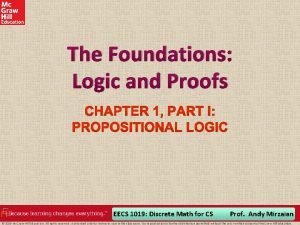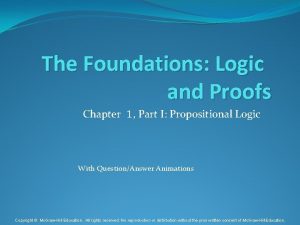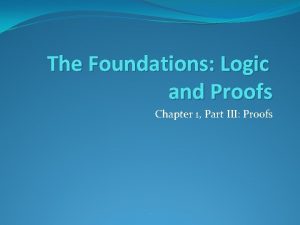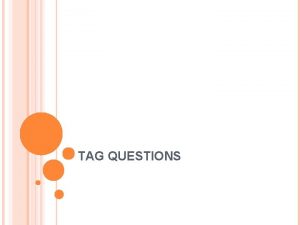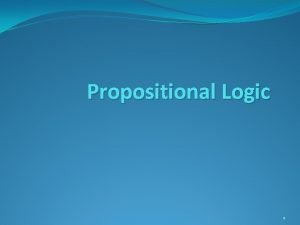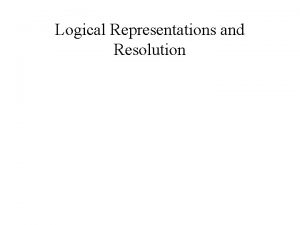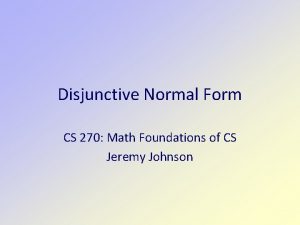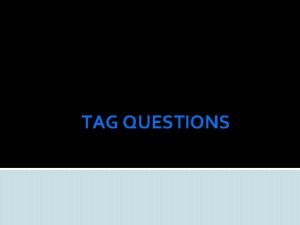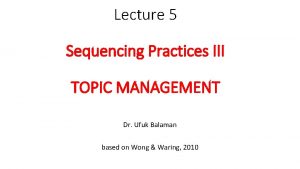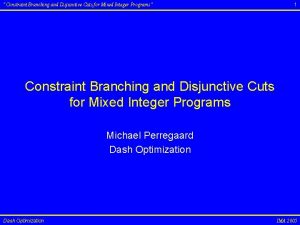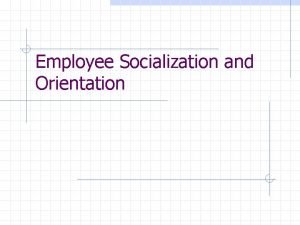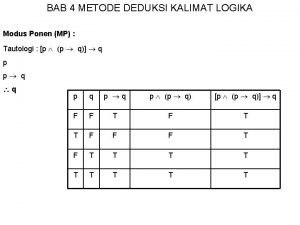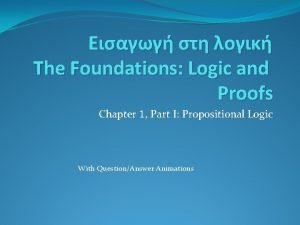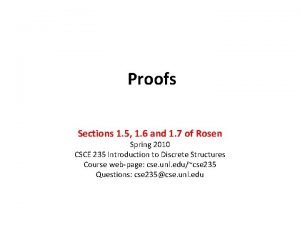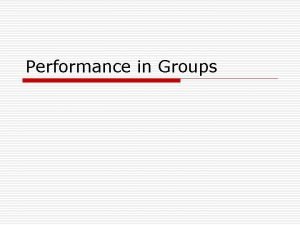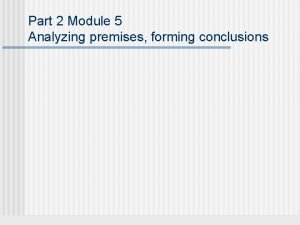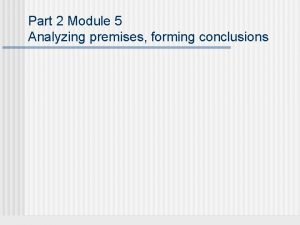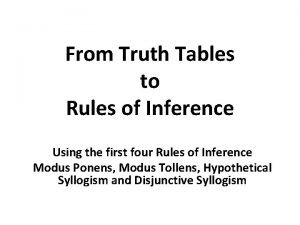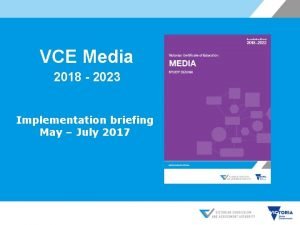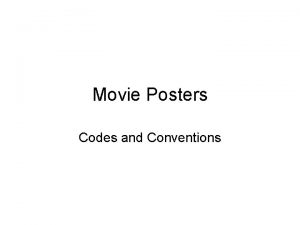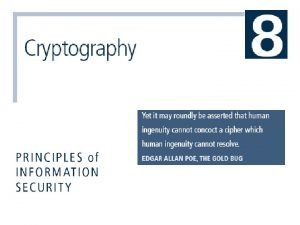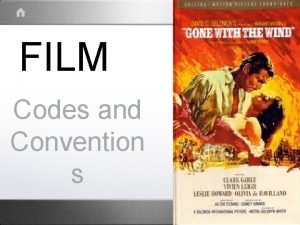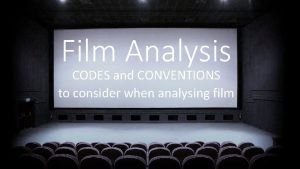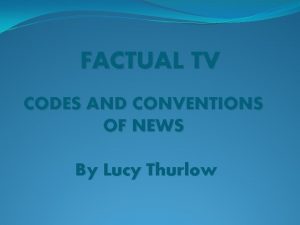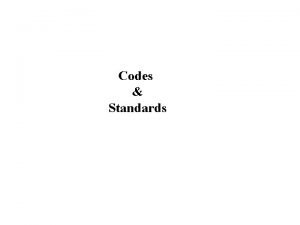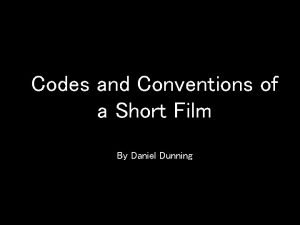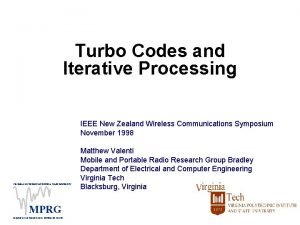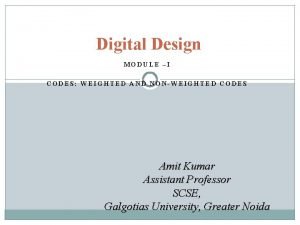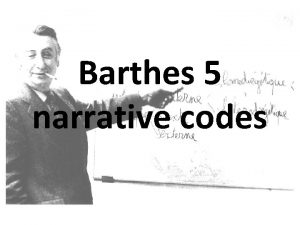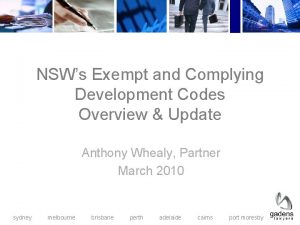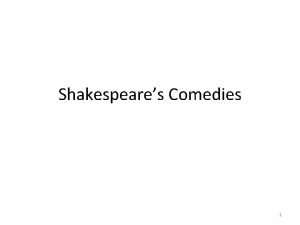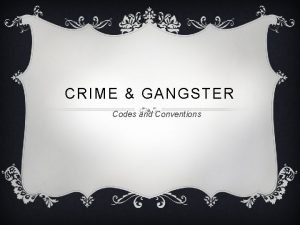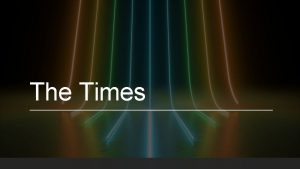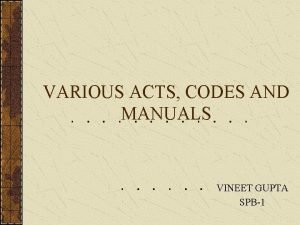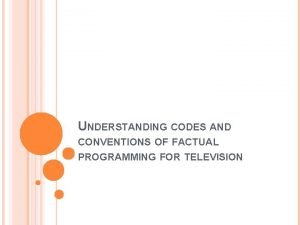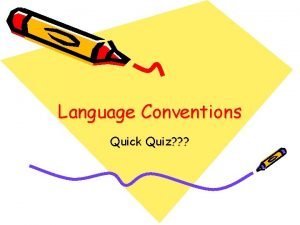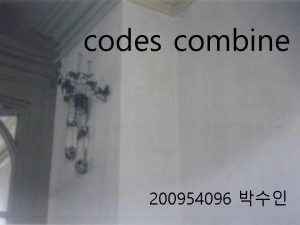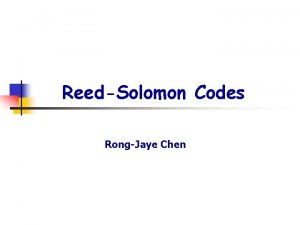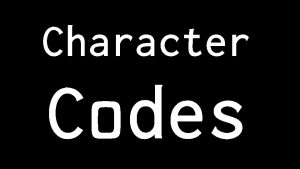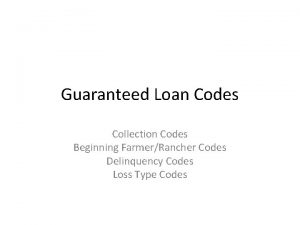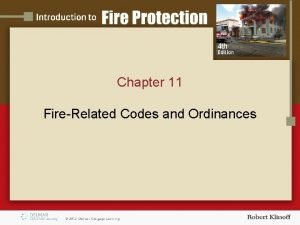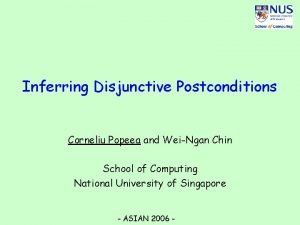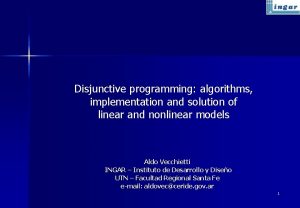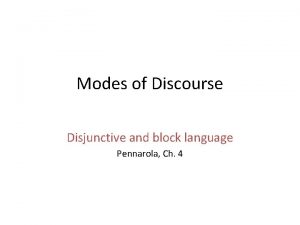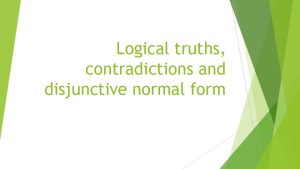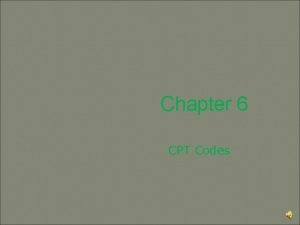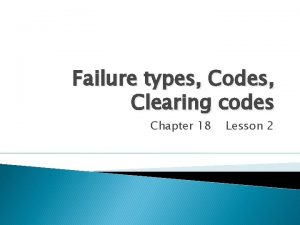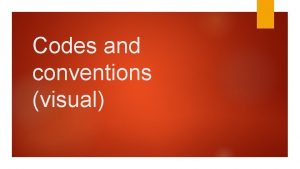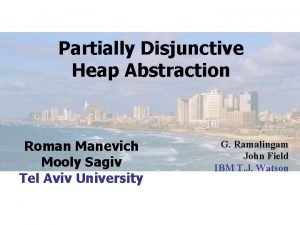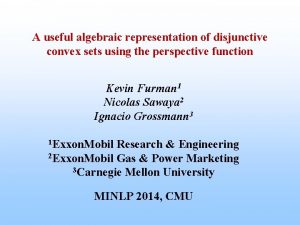Languages and Codes Chapter 8 8 Disjunctive Languages












































- Slides: 44

Languages and Codes Chapter 8 第 8章 醫學影像處理實驗室

Disjunctive Languages n n n A language L is disjunctive if the principal congruence PL is the identity. Def. A language L is disjunctive if for any two distinct words u, v A*, x, y A* s. t. xuy L and xvy L or vice versa. Every regular language L has finitely many PL congruence classes. No disjunctive language is regular. 10/28/2020 醫學影像處理實驗室 2

Properties n n Prop. Let A={a} and L A*. Then L is disjunctive L is not regular. Prop. Let L A*. Then (1) (2) (3). (1) L contains a disjunctive language. (2) L is dense. (3) |L A*w. A*|= for all w A*. 10/28/2020 醫學影像處理實驗室 3

Semi-Discrete n n n A language L is semi-discrete if k 1 s. t. |L An| < k for all n 1. If k =1, a semi-discrete language is called discrete. Prop. Every semi-discrete dense language is disjunctive. 10/28/2020 醫學影像處理實驗室 4

Disjunctive Pairs n n n L 1 L 2 = . The pair (L 1, L 2) is a disjunctive pair if u v, x, y A* s. t. either xuy L 1 xvy L 2 or xvy L 1 xuy L 2. If (L 1, L 2) is a disjunctive pair, then L 1 and L 2 are disjunctive languages. Rem. Let L A*. Then L is disjunctive (L, A* L) is a disjunctive pair. 10/28/2020 醫學影像處理實驗室 5

Examples Prop. (D(1), D(1)(i) ) is a disjunctive pair for any i 2. n Prop. (Q, Q(i) ) is a disjunctive pair for any i 2. n n Prop. Let | A| 2. Then Regular Languages. (1) A+D(1) = A+A. (2) A+D(2) = A+A 2 ( a A A(A {a})+a). 10/28/2020 醫學影像處理實驗室 6

Completely Disjunctive Languages 1 n n Def. An infinite language L is called completely disjunctive (resp. completely dense) if every infinite subset of L is disjunctive (resp. dense). Def. A dense language is called quasicompletely disjunctive if every dense subset of it is disjunctive. 10/28/2020 醫學影像處理實驗室 7

Examples n n Rem. Let | A| =1. Then every infinite subset of A* is completely dense. Ex. For | A| 2, let be a total order defined on A* and A+ ={u 1< u 2 < }. Every infinite subset of L ={u 1 u 2 ui | i 1} is dense and semi-discrete. Hence every infinite subset of L is disjunctive. L is quasi-completely and completely disjunctive. 10/28/2020 醫學影像處理實驗室 8

Completely Disjunctive Languages 2 n n Prop. Let | A| =1 and let L A* be an infinite language. Then (1) (2) (3): (1) L is completely disjunctive; (2) L is regular-free; (3) L is quasi-completely disjunctive. Prop. A language is completely disjunctive it is completely dense. 10/28/2020 醫學影像處理實驗室 9

Completely Disjunctive Languages 3 Prop. Let L 1, L 2 A* and L 1 L 2 completely disjunctive. If L 1 (or L 2 ) is infinite, then L 1 (or L 2 ) is completely disjunctive. n Prop. Let L be infinite. Then the following are equivalent: (1) L is completely disjunctive; (2) L(n) is completely disjunctive n 2; (3) L A*w. A* is finite w A*. n 10/28/2020 醫學影像處理實驗室 10

Quasi-Completely Disjunctive Languages 1 n n Prop. Lpal is quasi-completely disjunctive. Prop. semi-discrete dense language is quasi -completely disjunctive. Let FCD and FQCD denote the families of all completely disjunctive and quasi-completely disjunctive languages, respectively. Prop. L 1 L 2 FQCD L 1 FQCD or L 2 FQCD. 10/28/2020 醫學影像處理實驗室 11

Quasi-Completely Disjunctive Languages 2 Prop. Let L A*. Then the following are equivalent: (1) L is dense; (2) L contains a completely disjunctive lang. ; (3) L contains a quasicompletely disjunctive language; (4) L contains a disjunctive language. n FCD FQCD , A+ Q FQCD but A+ Q FCD. n 10/28/2020 醫學影像處理實驗室 12

Right Disjunctive Languages n n For L A*, except the principal congruence PL , another congruence - right congruence is studied frequently too. The right congruence RL is defined on A* by u v (RL) (ux L vx L, x A* ). n L is right disjunctive if RL is the identity. n L is right dense if u A*, L u. A* . 10/28/2020 醫學影像處理實驗室 13

Quasi-Completely Right Disjunctive Languages 1 n n Def. A completely right disjunctive language is an infinite language of which every infinite subset is right disjunctive. Def. A right dense language is called quasicompletely right disjunctive if every right dense subset of it is right disjunctive. 10/28/2020 醫學影像處理實驗室 14

Quasi-Completely Right Disjunctive Languages 2 n Prop. Let | A| =1 and let L A* be an infinite language. Then the following are equivalent: (1) L is regular-free; (2) L is completely disjunctive; (3) L is quasi-completely disjunctive; (4) L is quasi-completely right disjunctive; (5) L is completely right disjunctive. 10/28/2020 醫學影像處理實驗室 15

Quasi-Completely Right Disjunctive Languages 3 n n Prop. Completely right disjunctive language do not exist for the case | A| 2. Prop. Let L A* be a right dense language. If L is not quasi-completely right disjunctive, then LL 1 is not quasi-completely right disjunctive for every L 1 A*. 10/28/2020 醫學影像處理實驗室 16

Quasi-Completely Right Disjunctive Languages 4 n Prop. Let L A*. Then (1) (2): (1) L is right dense; (2) L contains a quasi-completely right disjunctive language. 10/28/2020 醫學影像處理實驗室 17

Disjunctive Domains 1 Def. A language L A* is disjunctive if x y A*, x y (PL ). n Def. A language L A* is called a (right) disjunctive domain if it satisfies the following condition for every L 1 A*: if (x y (RL 1 )) x y (PL 1 ) for every x y L, then L 1 is (right) disjunctive. n 10/28/2020 醫學影像處理實驗室 18

L-Representation n n For L A+ and w A+, an L-representation of w is defined as w =x 1 y 1 x 2 y 2 xn yn xn+1 , where yj L, j =1, 2, , n, F (xi) L = , i =1, 2, , n+1. If L is a solid code, then the L-representation of each word is unique. 10/28/2020 醫學影像處理實驗室 19

(u, v)-Related Pairs 1 n Def. Let u, v A+. For two words w 1, w 2 A+, (w 1, w 2) is said to be a (u, v)-related pair if there are some {u, v}-representations of w 1 and w 2 s. t. w 1= x 1 y 1 x 2 y 2 xn yn xn+1 , w 2= x 1 z 1 x 2 z 2 xn zn xn+1 , where yi, zi {u, v} and u, v F(xj), 1 i n, 1 j n+1. 10/28/2020 醫學影像處理實驗室 20

(u, v)-Related Pairs 2 n n Rem. If u v (PL ) for some L A* and (w 1, w 2) is a (u, v)-related pair, then w 1 w 2 (PL ). Ex. Let z 1= a(a 2)ab(b 2) and z 2= a(b 2)ab(b 2). Then (z 1, z 2) is a (a 2, b 2)-related pair. If z 3= aba 2 b 3, then (z 1, z 3) is a (a 2, ba)-related pair, since z 1= a(a 2)ab 3 and z 3= a(ba)ab 3. 10/28/2020 醫學影像處理實驗室 21

(u, v)-Related Pairs 3 n n n For u 1, u 2, v 1, v 2 A+, ui vi , i =1, 2, by (u 2, v 2) (u 1, v 1), we mean that (u 2, v 2) is a (u 1, v 1)related pair. 方便證明及使用 Prop. is a partial order and not compatible with multiplication. Rem. For any u v A+, (xuy, xvy) (u, v) for any x, y A*. 10/28/2020 醫學影像處理實驗室 22

(u, v)-Related Pairs 4 n n n Let Psolid denote the set of those pairs (u, v) which satisfy (1) {u, v} a. A+b An, n 3; (2) {u, v} is a solid code; (3) {u, v} {a+b, ab+}= . Lem. For any u v A+, let n max(lg(u), lg(v)). {a 3 nbuab 3 n, a 3 nbvab 3 n} is a solid code. Lem. For any u v A+, (u, v)-related pair (z 1, z 2) s. t. (z 1, z 2) Psolid. 10/28/2020 醫學影像處理實驗室 23

A Special Language 1 n n n Consider (u, v) Psolid. Let n = lg(u) = lg(v). For any x A+ with u, v F(x), we let = bmabnxanbam, where m is the position of x in A* ordered by the standard total order. Define H ={ | x A+, u, v F(x)}. Clearly, for any w H, u, v F(w). And, u F(w) v F(w) xwy H for any x, y A*. 10/28/2020 醫學影像處理實驗室 24

A Special Language 2 n For 0 r s, define D = H E. (Not disjunctive. ) 10/28/2020 醫學影像處理實驗室 25

Properties of the Set D Lem. Let (u, v) Psolid w 1, w 2 A* s. t. (w 1, w 2) is not a (u, v)-related pair. Then F(w 1) {u, v} F(w 2) {u, v} w 1 w 2 (PD). n Lem. Let (u, v) Psolid. Then (1) uv vu (PD). (2) If w 1 w 2 A* is s. t. (w 1, w 2) is not a (u, v)related pair, then w 1 w 2(PD). n 10/28/2020 醫學影像處理實驗室 26

Disjunctive Domains 2 n n n Th. Let {a, b} A. Then (1) (2). (1) L A* is a disjunctive domain; (2) (u, v) Psolid , (u, v)-related pair (z 1, z 2) s. t. {z 1, z 2} L. Cor. u v A+, x, y A* s. t. xuy L xvy L L is a disjunctive domain. Cor. Q is a disjunctive domain. 10/28/2020 醫學影像處理實驗室 27

Properties of Disjunctive Domains n n Prop. Let A={a}. Then L A* is a disjunctive domain L is infinite. Prop. disjunctive domain is dense. Prop. No discrete language is a disjunctive domain. Prop. If L is a disjunctive domain, then LL 1 and L 1 L are disjunctive domains L 1 . 10/28/2020 醫學影像處理實驗室 28

Right Disjunctive Domains Th. L A* is a right disjunctive domain u v A*, x A* s. t. {u, v}x L. n Prop. right disjunctive domain is right dense. n Prop. No discrete language is a right disjunctive domain. n n Cor. Q is a right disjunctive domain. 10/28/2020 醫學影像處理實驗室 29

Properties of Right Disjunctive Domains n n n Cor. If L is a right disjunctive domain, then for any finite subset F L, L F is a right disjunctive domain. Cor. There is no minimal (right) disjunctive domain. Rem. right disjunctive domain contains infinitely many primitive words. 10/28/2020 醫學影像處理實驗室 30

-Languages n n An -word over a finite alphabet A is an infinite sequence of letters of A. By A we denote the set of infinite words ( -words). Subsets of A are called -languages. There are three syntactic congruences for languages, i. e. , P , L, IL and OL. 10/28/2020 醫學影像處理實驗室 31

The Congruence P , L An analogue of the principal congruence when considering relations on A* introduced by an -language L A is the equivalence relation P , L , defined by: for u, v A*, u v (P , L ) ( x A* A , xu L iff xv L). n P , L is a congruence and L A is called P-disjunctive if P , L is the equality. n 10/28/2020 醫學影像處理實驗室 32

The Congruence IL n n n Let L A. An equivalence relation IL on A* introduced by L is defined by: for u, v A*, u v (IL ) ( x, y A*, x(uy) L iff x(vy) L). IL is a congruence on A*, which has been called an infinitary syntactic-congruence. L A is called I-disjunctive if IL is the equality. 10/28/2020 醫學影像處理實驗室 33

The Congruence OL n n n Let L A. A compatible equivalence relation OL on A is defined by: for , A , (OL ) ( x A*, x L iff x L). OL is a congruence on A , which is called the -syntactic congruence of L. L A is called O-disjunctive if OL is the equality. 10/28/2020 醫學影像處理實驗室 34

P-Dense and P-Discrete An -language L is P-dense if u A*, x A* A s. t. xu L. n An -language L is P-discrete if u v A*, {xu , xv } L lg(u) lg(v), where x A* A . n Prop. P-discrete P-dense -language is P-disjunctive. n 10/28/2020 醫學影像處理實驗室 35

I-Dense and I-Discrete n An -language L is I-dense if u A*, x, y A* s. t. x(uy) L. n I-disjunctive -language is I-dense. n I-dense -language is infinite. n An -language L is I-discrete if u v A*, {xu , xv } L lg(u) lg(v), where x A*. 10/28/2020 醫學影像處理實驗室 36

O-Disjunctive and -Dense n n L A is O-disjunctive 1 2 A , x A* s. t. x 1 L x 2 L, or vice versa. The complement of an O-disjunctive language is O-disjunctive too. O-disjunctive -languages are also called separative -languages. L A is called -dense if A , x A* s. t. x L. 10/28/2020 醫學影像處理實驗室 37

P-Disjunctive -Languages Prop. Let | A| 2 and L A. Then the following are equivalent: (1) L is P-disjunctive; (2) u, v A*, lg(u) = lg(v), u v (P , L) u = v ; (3) p, q Q, lg(p) = lg(q), p q (P , L) p = q. n Let A+ ={x 1< x 2< x 3< } be ordered by the standard total order and let i = xiai, a A. n = 1 2 A. { } is P-disjunctive. n 10/28/2020 醫學影像處理實驗室 38

I-Disjunctive -Languages 1 Prop. Let | A| 2 and L A. Then the following are equivalent: (1) L is I-disjunctive; (2) u, v A*, lg(u) = lg(v), u v (IL) u = v ; (3) p, q Q, lg(p) = lg(q), p q (IL) p = q. n Prop. I-discrete I-dense -language is I-disjunctive. n 10/28/2020 醫學影像處理實驗室 39

I-Disjunctive -Languages 2 n n Th. An -language is I-dense it contains an I-disjunctive -language. (For any I-dense -language, one must construct an I-disjunctive subset. ) Prop. L A is I-disjunctive PL is I-disjunctive for any finite prefix code P A +. 10/28/2020 醫學影像處理實驗室 40

O-Disjunctive -Languages n n Prop. Let | A| 2 and L A* an infinite prefix code. Then L' ={uw | u L, A , w Alg(u), w <p } is an O-disjunctive -language. Prop. Let P A+ be a finite prefix code. Then L A is O-disjunctive PL is an O-disjunctive language. 10/28/2020 醫學影像處理實驗室 41

Families of Disjunctive -Languages 1 An -language is said to be I-closed if for x, u, v A+, xunv L for every n 1 xu L. n Prop. I-closed I-disjunctive -language is P-disjunctive. n Prop. O-disjunctive -language is P-disjunctive. n Prop. P-disjunctive -language which is not O-disjunctive. 醫學影像處理實驗室 10/28/2020 42 n

Families of Disjunctive -Languages 2 n n n Prop. O-disjunctive -language is I-disjunctive. Prop. I-disjunctive -language which is not O-disjunctive. Prop. P-discrete -language which is not I -discrete I-discrete -language which is not P-discrete. 10/28/2020 醫學影像處理實驗室 43

Quasi-Completely O-Disjunctive -Languages n n An O-disjunctive -language L is called quasi-completely O-disjunctive if -dense subset of L is O-disjunctive. Prop. Let {a, b} A and L={aibw | A , w Ai, w <p }. Then L is a quasi-completely O-disjunctive -language. 10/28/2020 醫學影像處理實驗室 44
 Logical equivalence
Logical equivalence The foundations logic and proofs
The foundations logic and proofs Disjunctive syllogism
Disjunctive syllogism Neither of them complained question tag
Neither of them complained question tag Disjunction of proposition
Disjunction of proposition Conjunctive normal
Conjunctive normal Equivalent disjunctive form example
Equivalent disjunctive form example Transitive reasoning math examples
Transitive reasoning math examples Nobody lives in this house question tag
Nobody lives in this house question tag Stepwise topic shift
Stepwise topic shift Disjunctive cuts
Disjunctive cuts Serial vs disjunctive
Serial vs disjunctive Contoh hypothetical syllogism
Contoh hypothetical syllogism Define disjunctive normal form
Define disjunctive normal form Modus ponens
Modus ponens Conjunctive group task
Conjunctive group task Invalid disjunctive syllogism
Invalid disjunctive syllogism Fallacy of inverse
Fallacy of inverse Disjunctive syllogism
Disjunctive syllogism Vce media study design
Vce media study design Conventions of a movie poster
Conventions of a movie poster Cryptovariable
Cryptovariable Genre of photography
Genre of photography Symbolic codes film
Symbolic codes film Convention in film
Convention in film Common codes and conventions in news
Common codes and conventions in news Emmsap
Emmsap Code standards and practices 1 lesson 5
Code standards and practices 1 lesson 5 What are codes and conventions
What are codes and conventions Codes and conventions examples
Codes and conventions examples Blog genre conventions
Blog genre conventions Turbo codes advantages and disadvantages
Turbo codes advantages and disadvantages Comedy codes and conventions
Comedy codes and conventions Weighted and non weighted codes in digital electronics
Weighted and non weighted codes in digital electronics Enigma code barthes
Enigma code barthes Codes sepp
Codes sepp Conventions of pop music
Conventions of pop music Codes and conventions of comedy
Codes and conventions of comedy Written codes and conventions
Written codes and conventions Importance of codes and conventions
Importance of codes and conventions Ciphers for beginners
Ciphers for beginners Music video codes
Music video codes Codes and manuals
Codes and manuals Documentary codes and conventions
Documentary codes and conventions Media codes and conventions quiz
Media codes and conventions quiz
